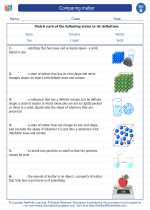Comparing Matter
Matter is anything that has mass and takes up space. There are three states of matter: solid, liquid, and gas. When we compare matter, we can look at its properties such as size, shape, color, texture, and flexibility. These properties help us understand and differentiate between different types of matter.
Properties of Matter
1. Size: This refers to the dimensions of an object, such as length, width, and height.
2. Shape: The form of an object, whether it is round, square, or any other shape.
3. Color: The visual appearance of an object, determined by the wavelengths of light it reflects.
4. Texture: The feel or appearance of a surface, such as smooth, rough, bumpy, or soft.
5. Flexibility: How easily an object can bend or be reshaped without breaking.
Comparing States of Matter
When comparing the three states of matter, we can look at how their particles are arranged and how they move.
Solid: In a solid, the particles are closely packed together and vibrate in place. Solids have a definite shape and volume.
Liquid: The particles in a liquid are not as closely packed as in a solid, and they can move around each other. Liquids have a definite volume but take the shape of their container.
Gas: Gas particles are spread out and move freely, filling the space available to them. Gases have neither a definite shape nor volume.
Study Guide
- What is matter?
- List five properties of matter.
- Compare and contrast the properties of solids, liquids, and gases.
- Give an example of each state of matter in everyday life.
- How do the particles in each state of matter behave?
Understanding and comparing matter is essential in science, as it helps us make sense of the world around us and how different substances interact with each other.
.◂Science Worksheets and Study Guides Second Grade. Comparing matter
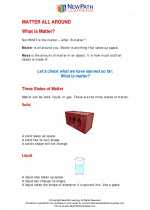
 Activity Lesson
Activity Lesson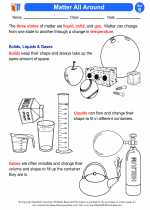
 Worksheet/Answer key
Worksheet/Answer key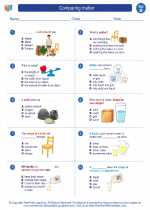
 Worksheet/Answer key
Worksheet/Answer key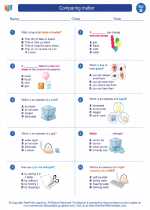
 Worksheet/Answer key
Worksheet/Answer key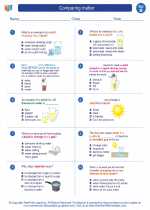
 Vocabulary/Answer key
Vocabulary/Answer key